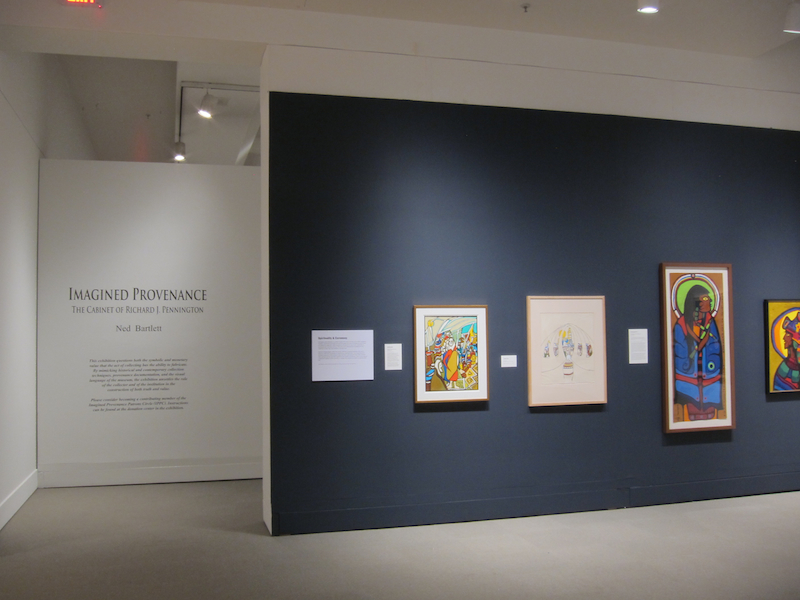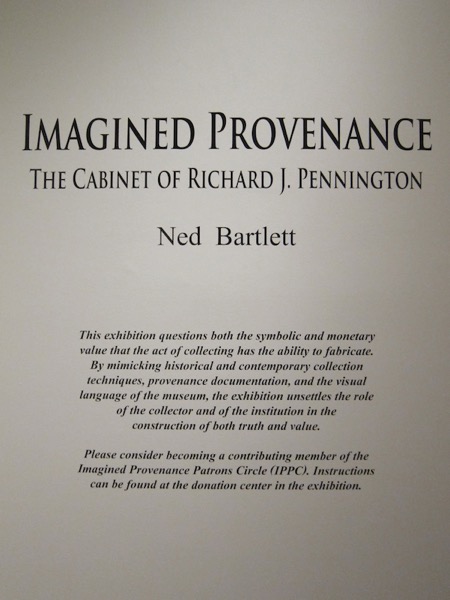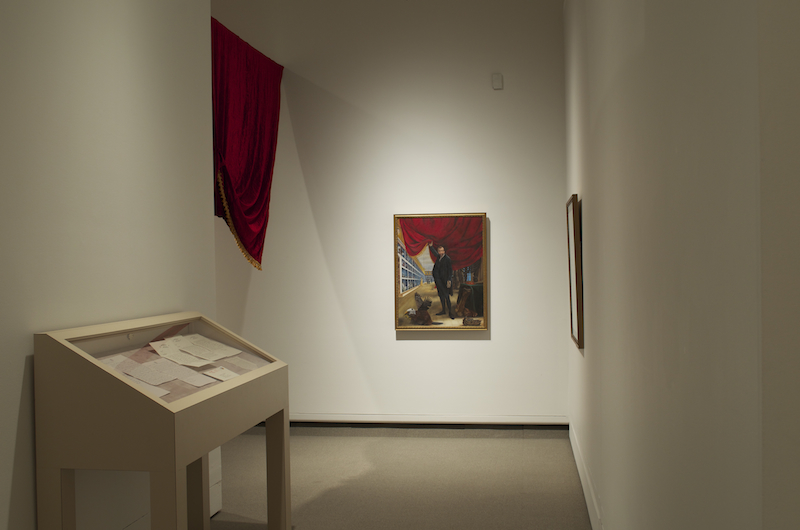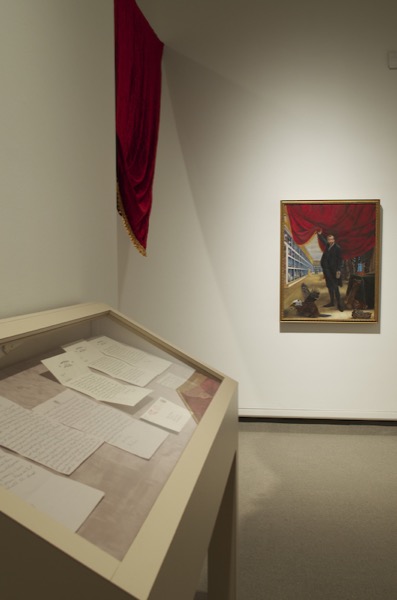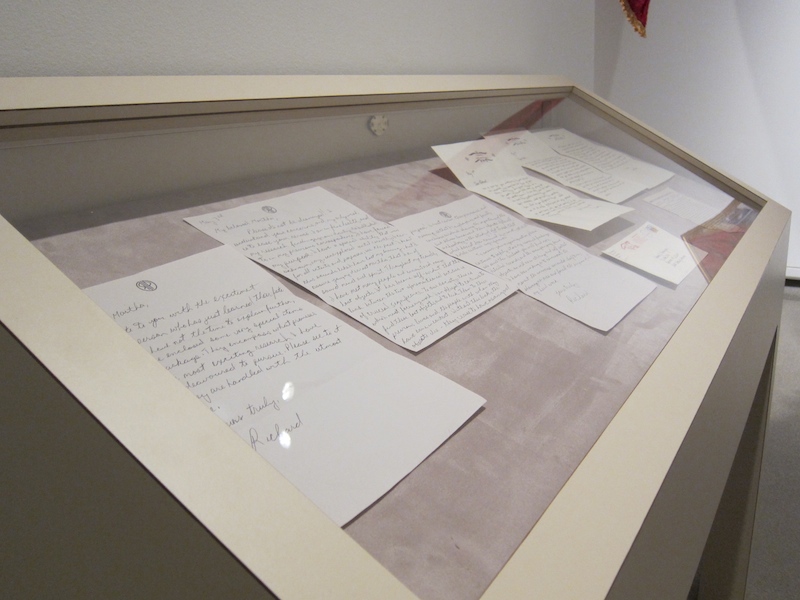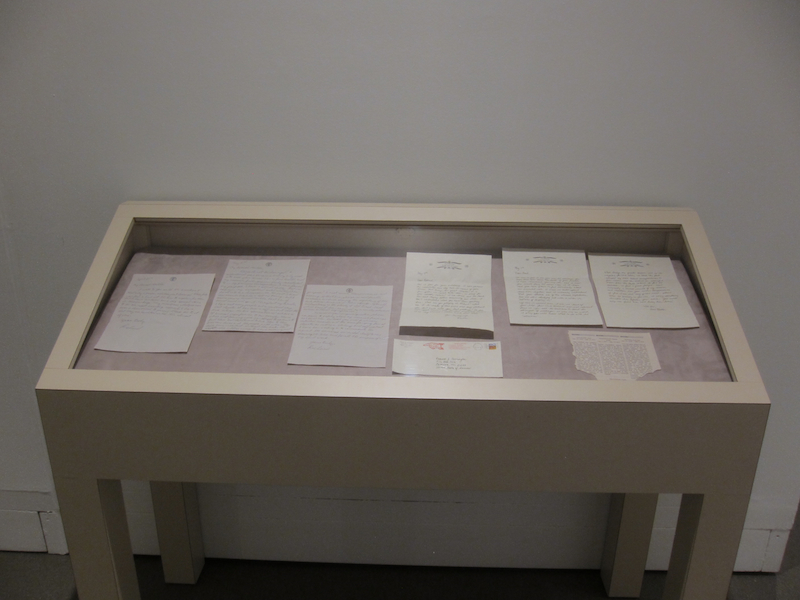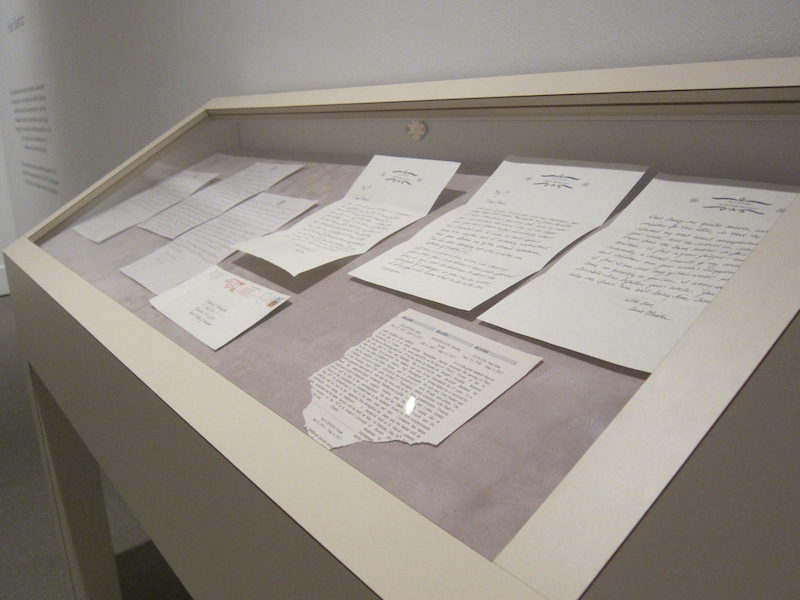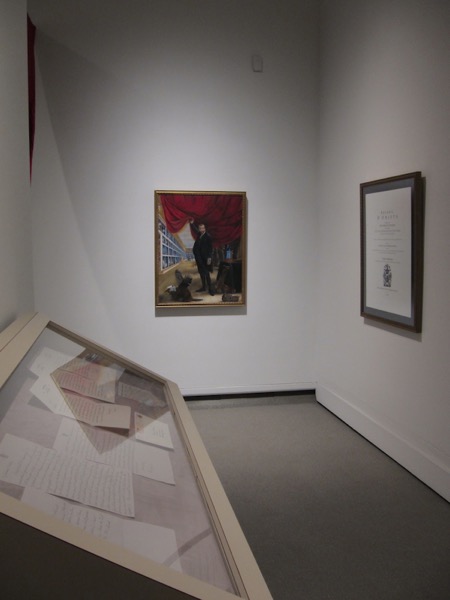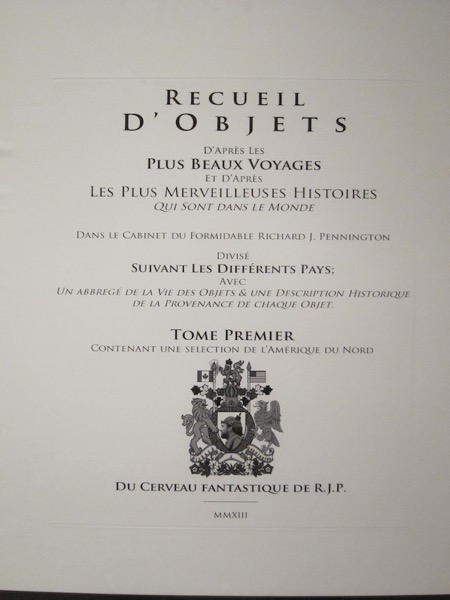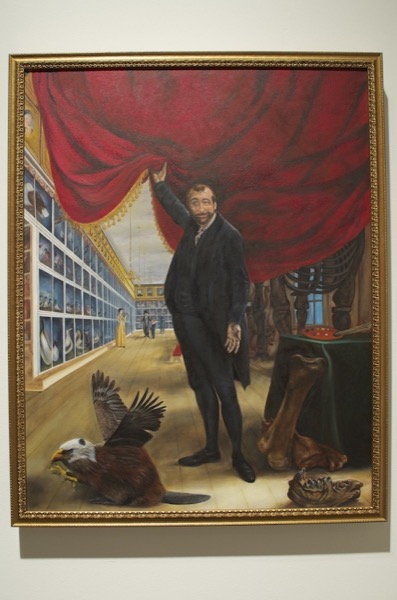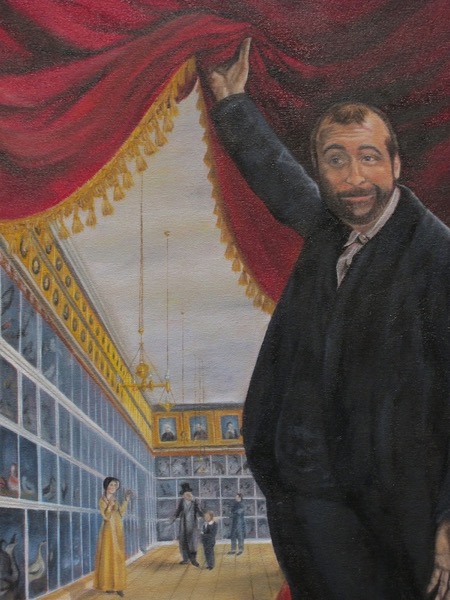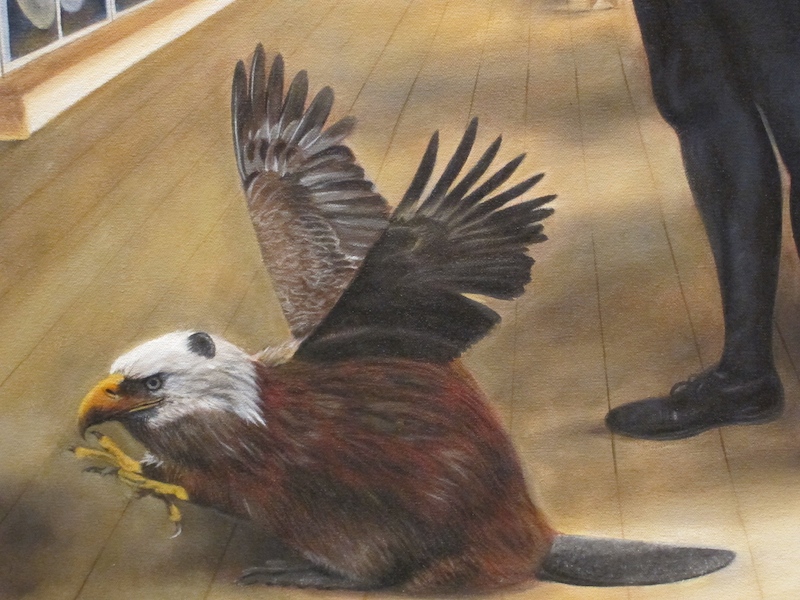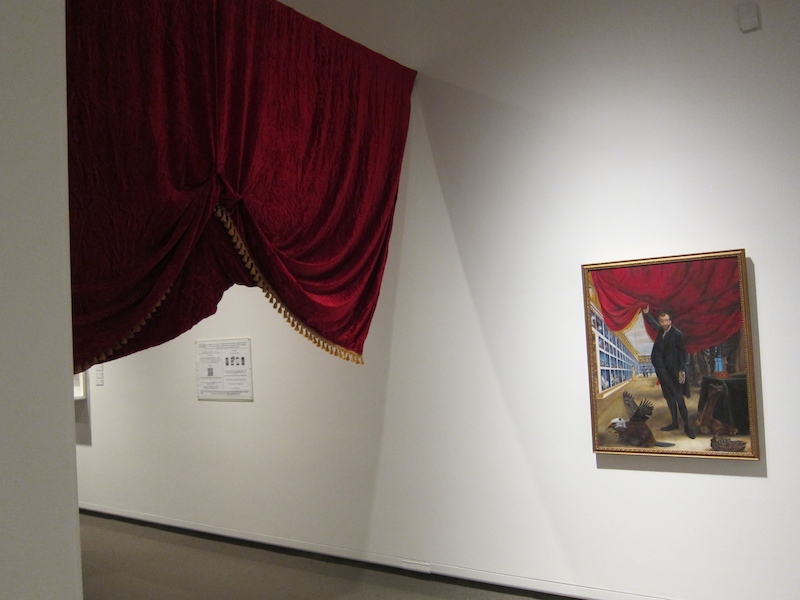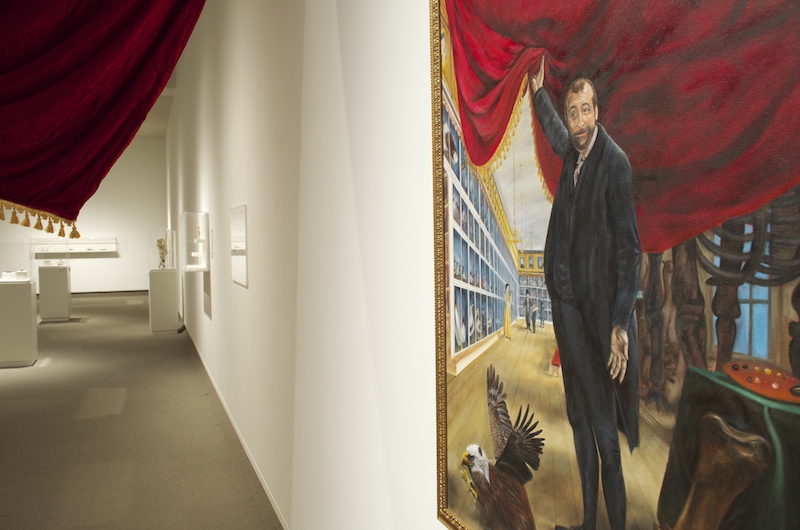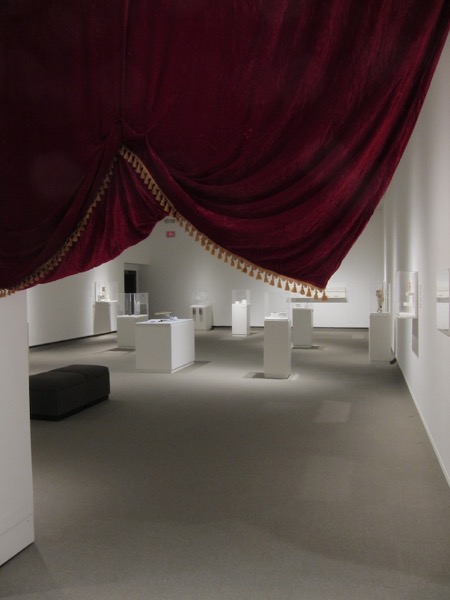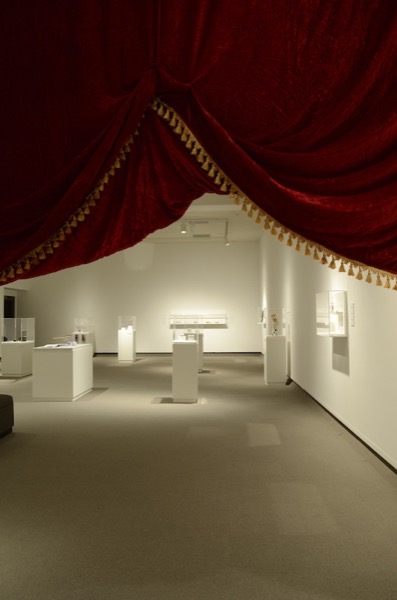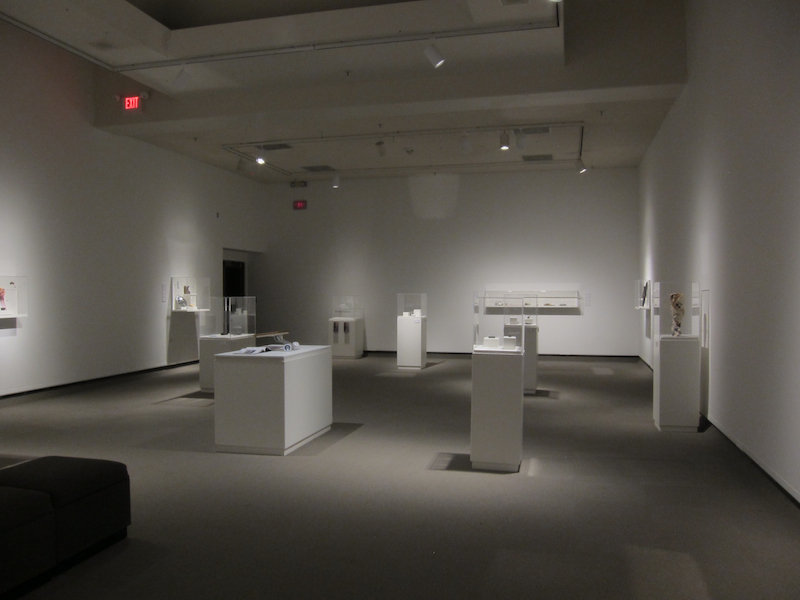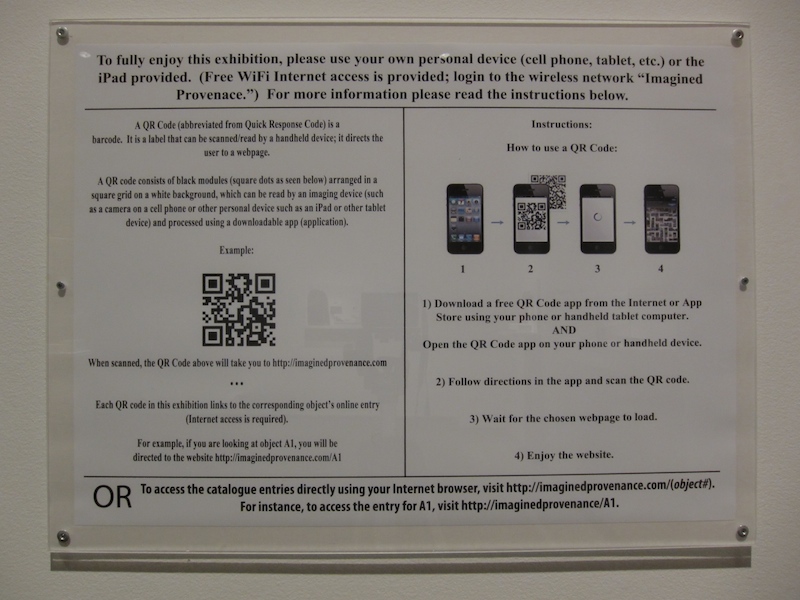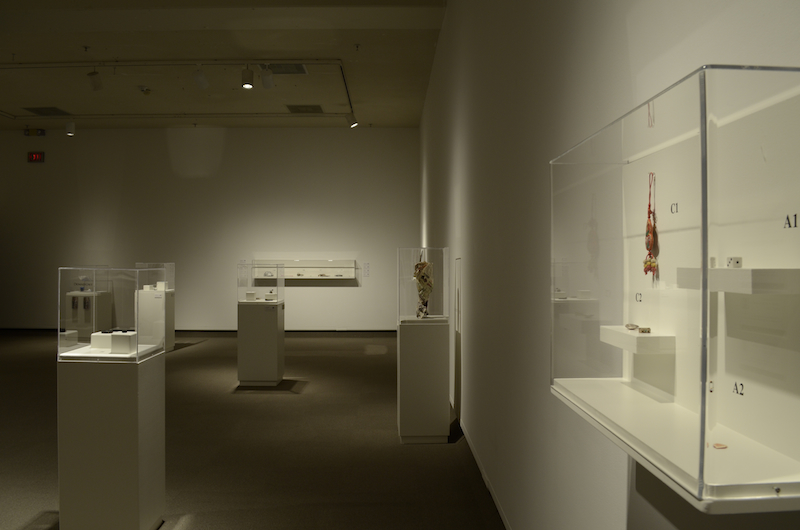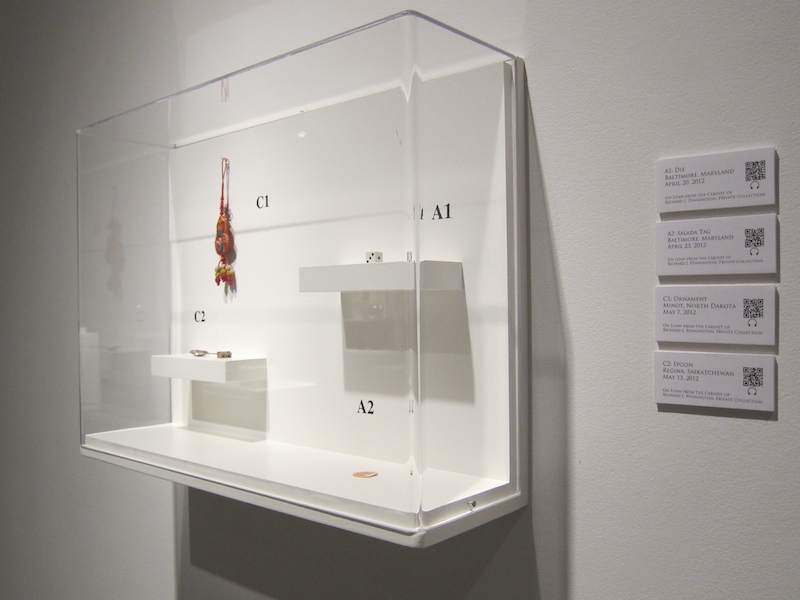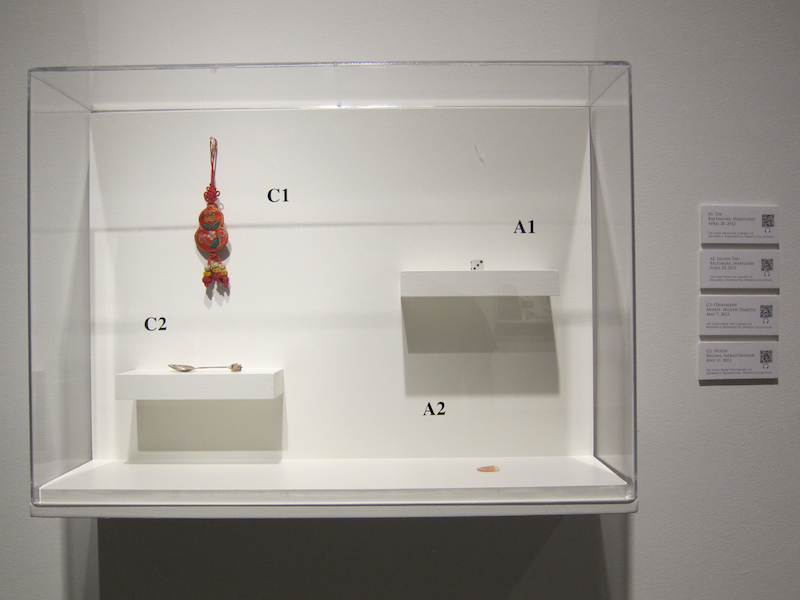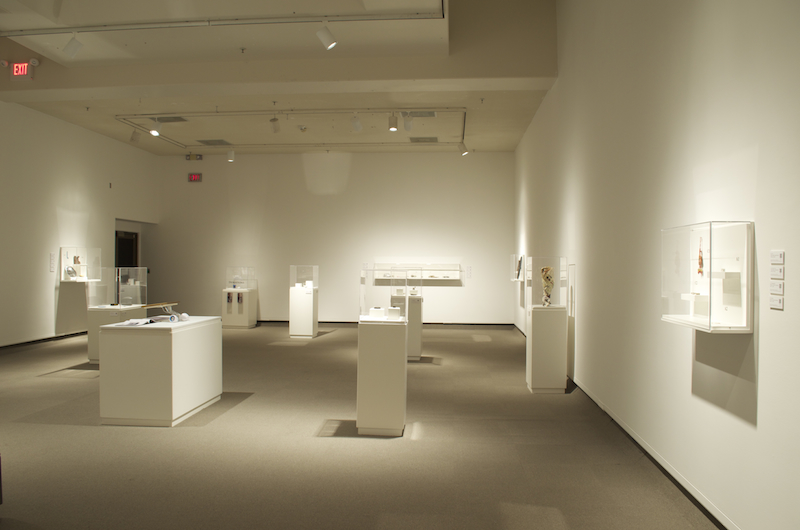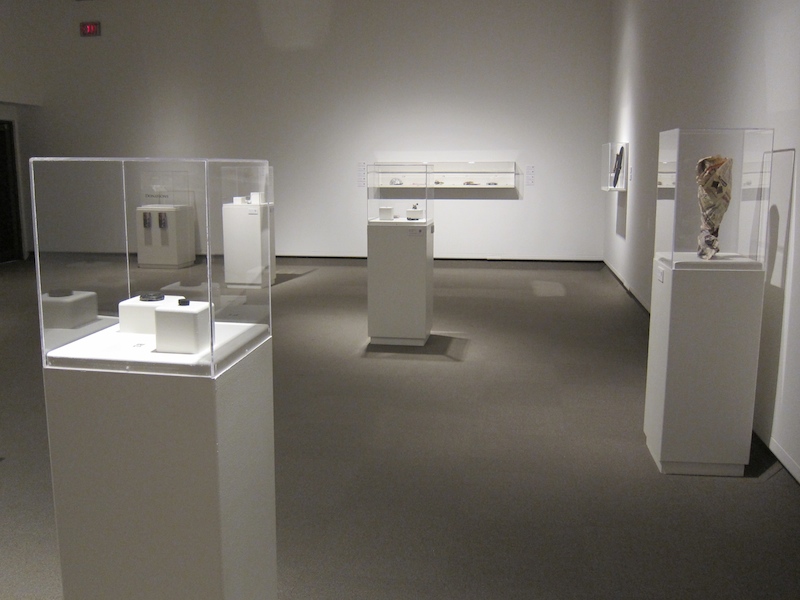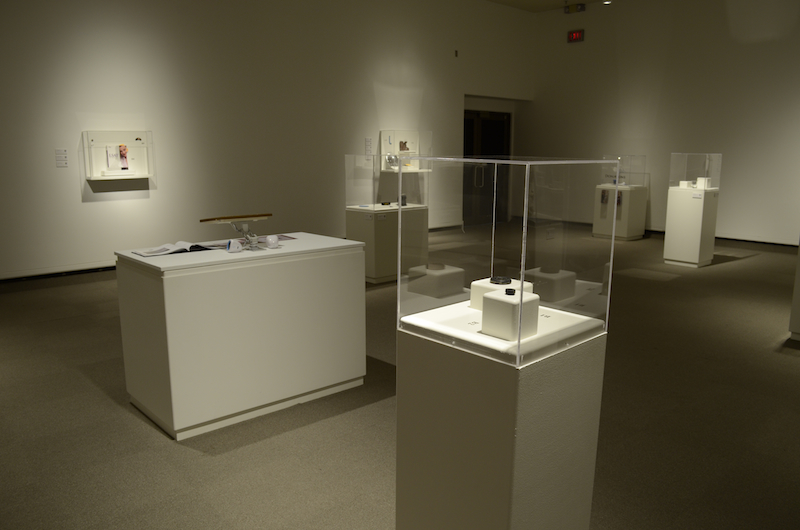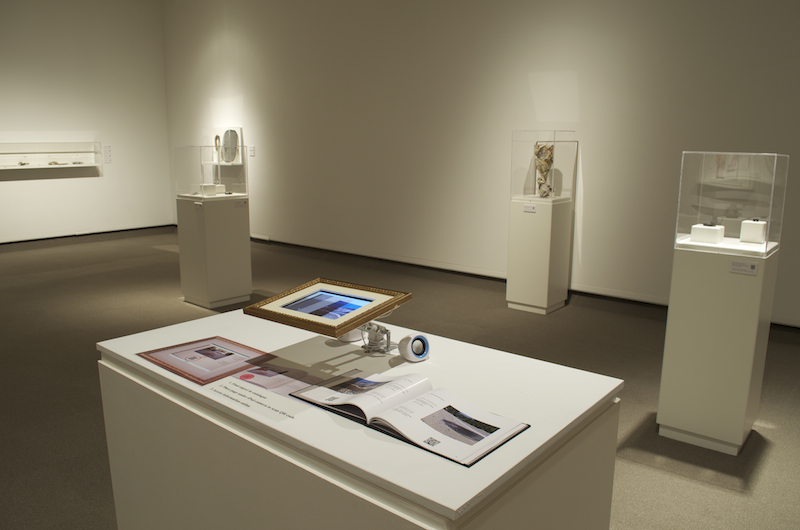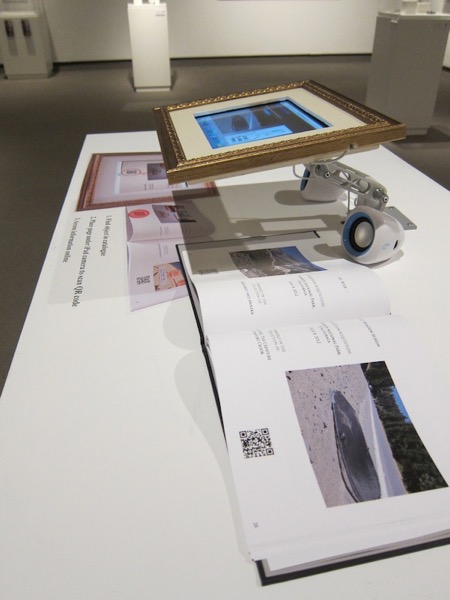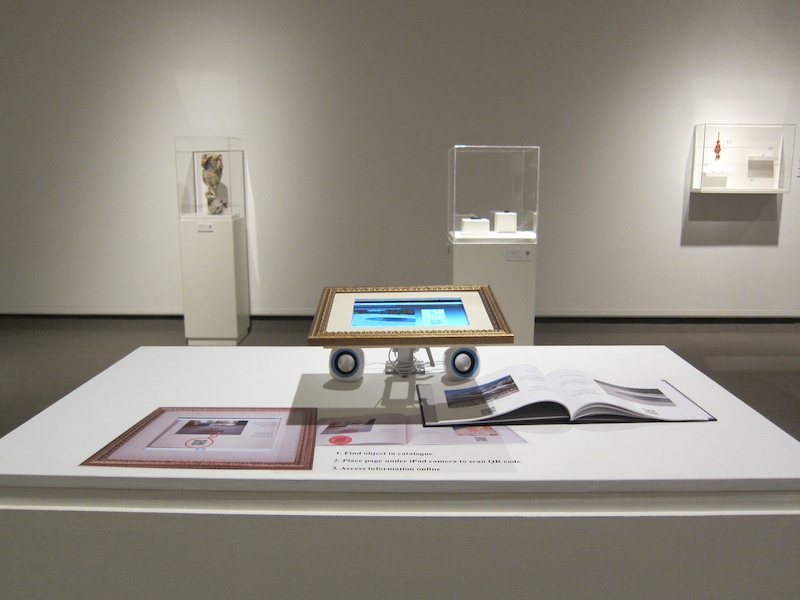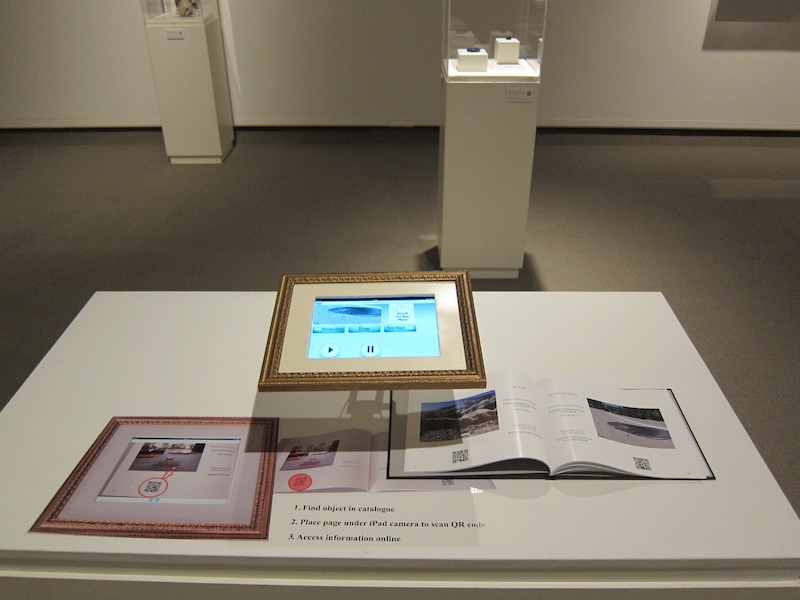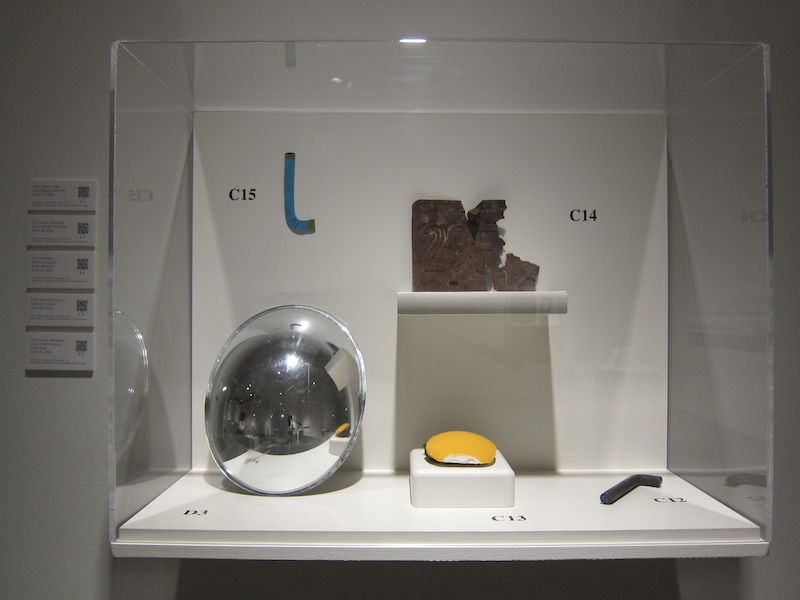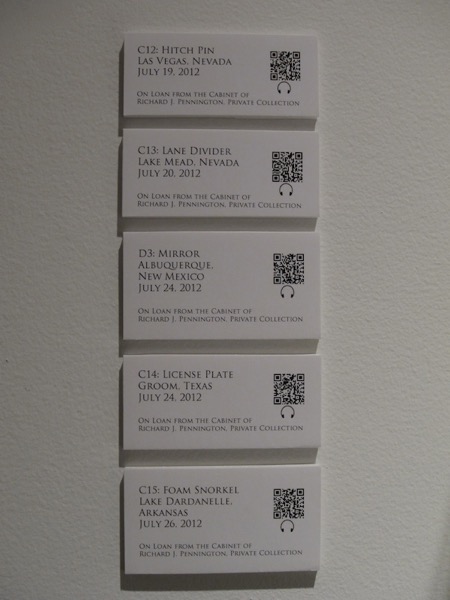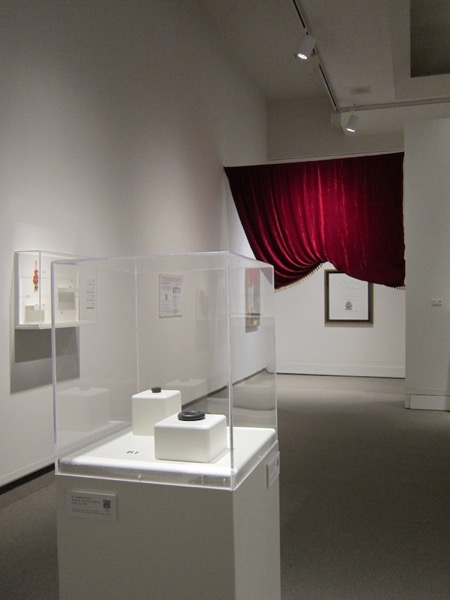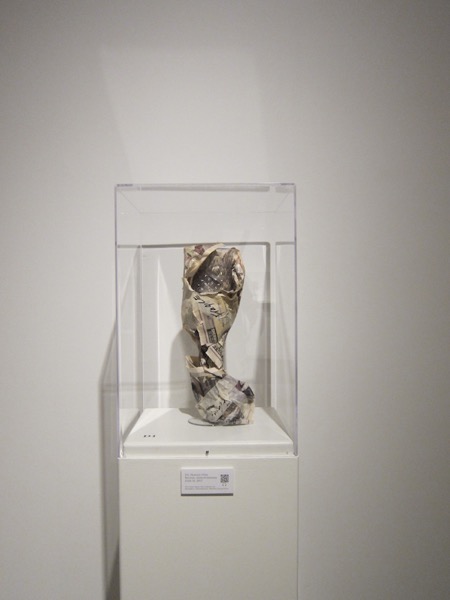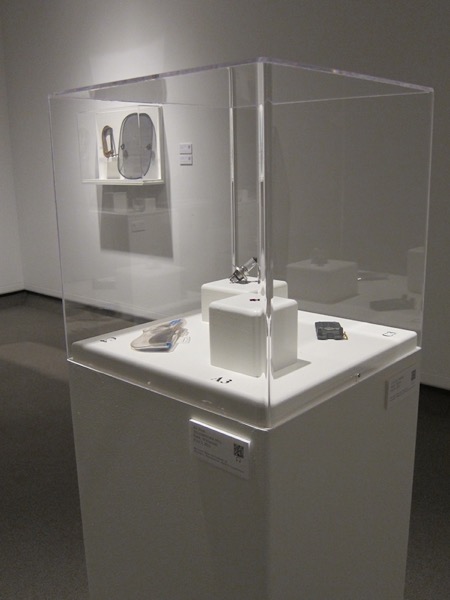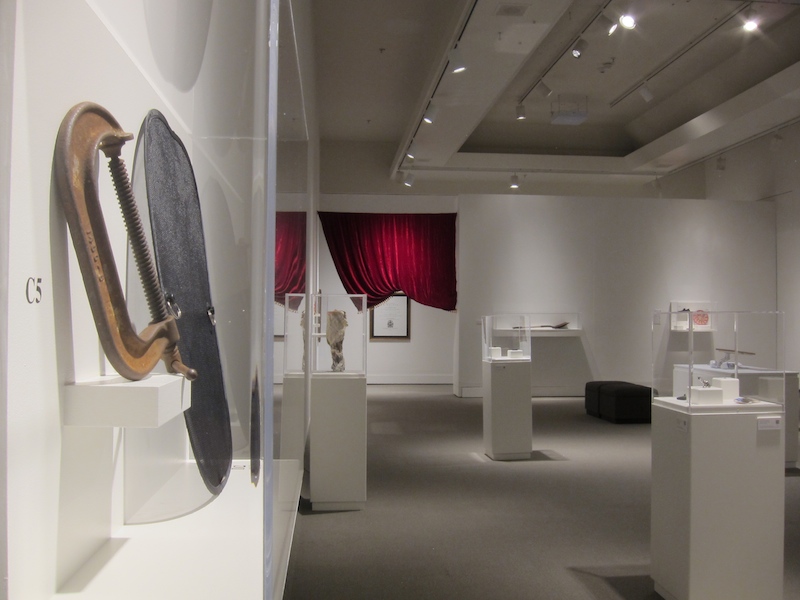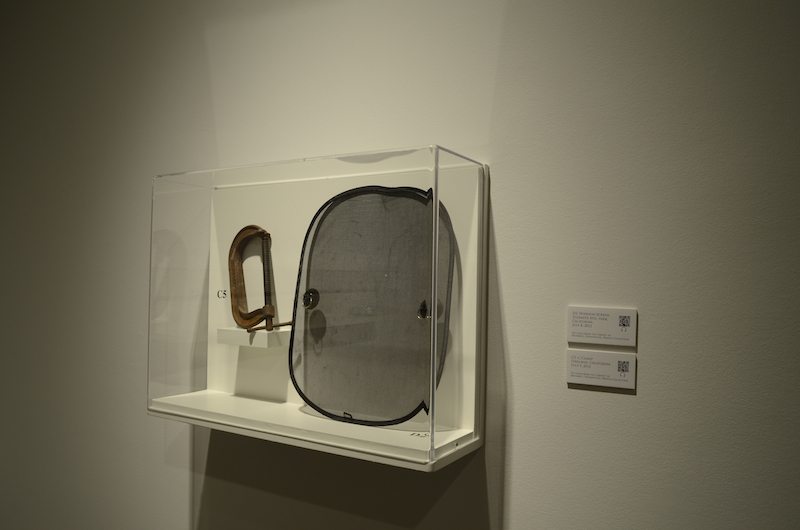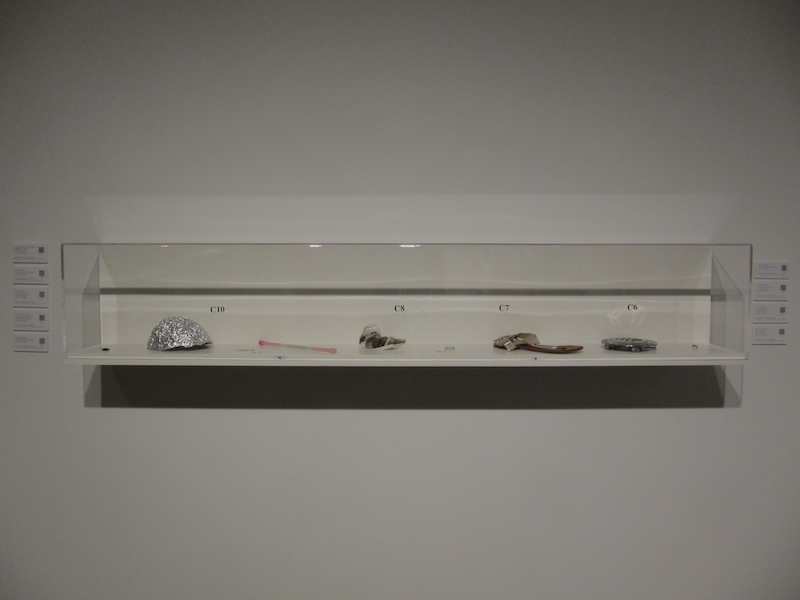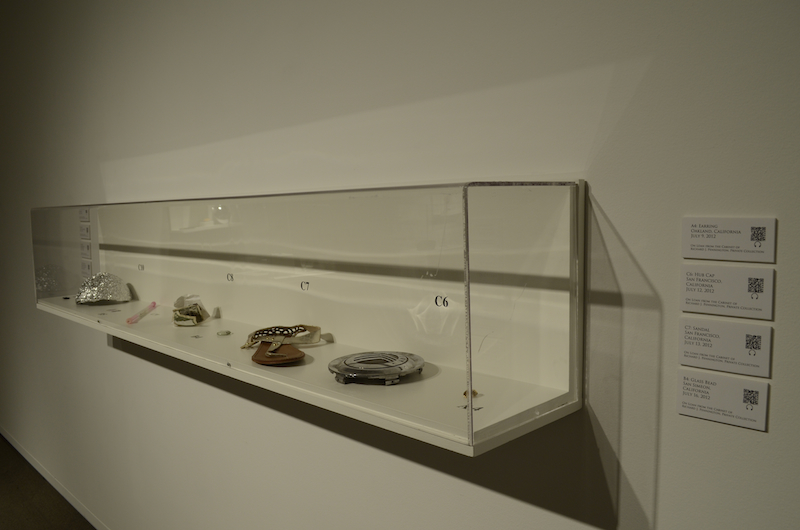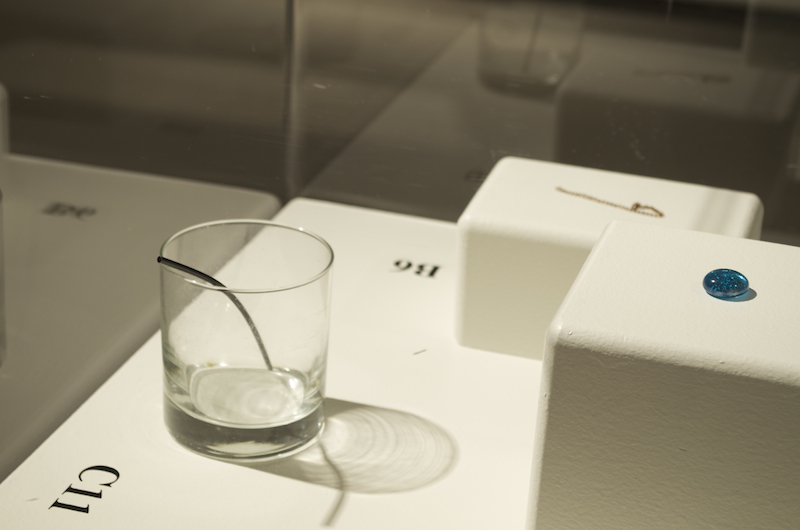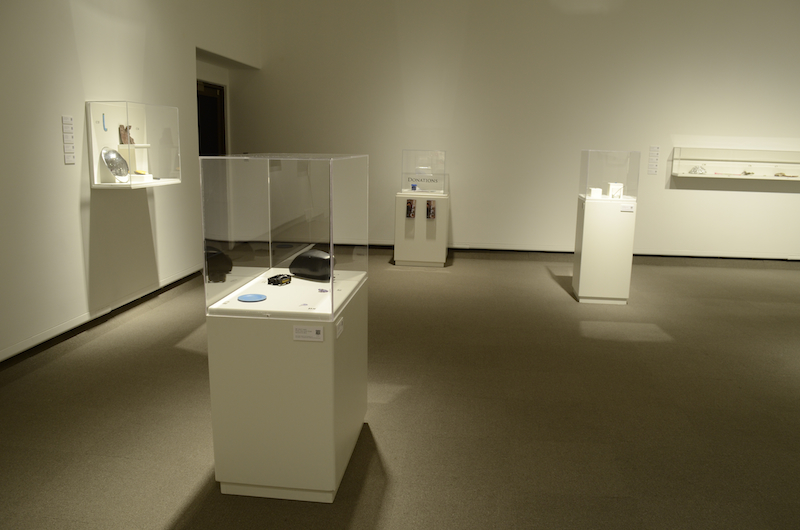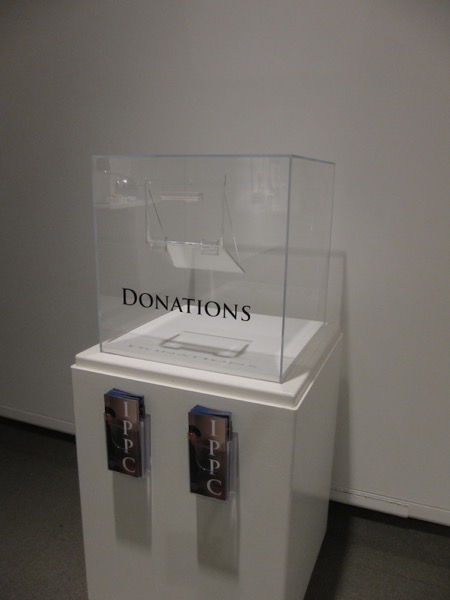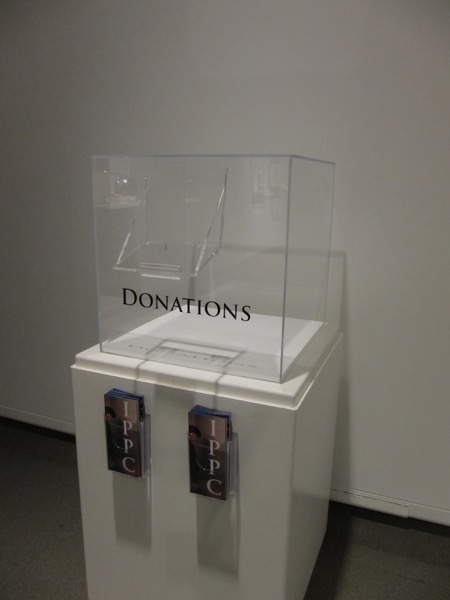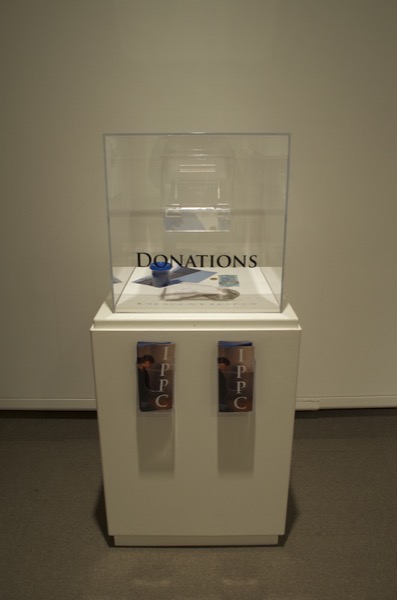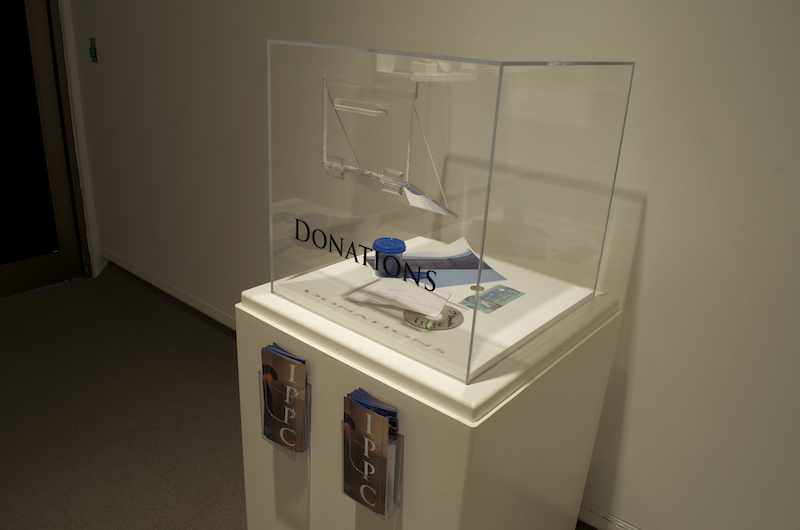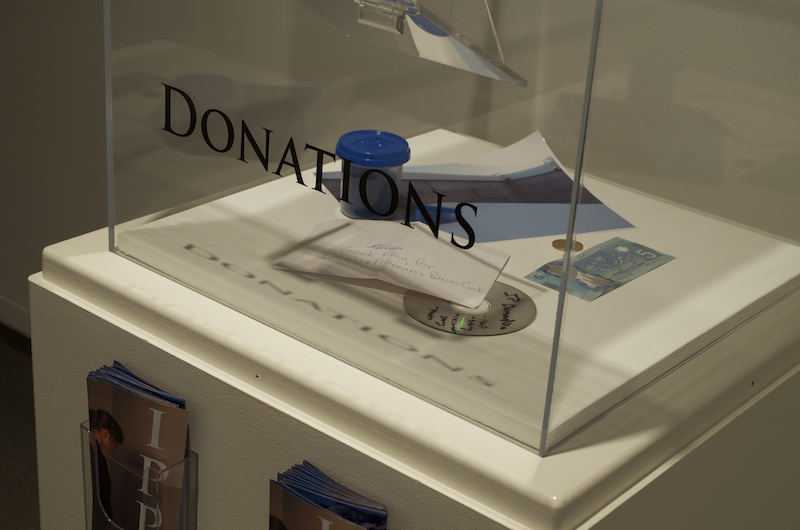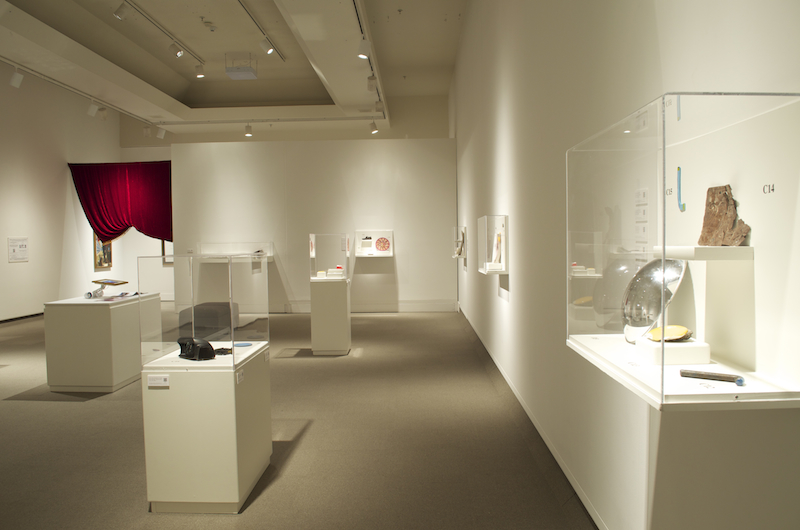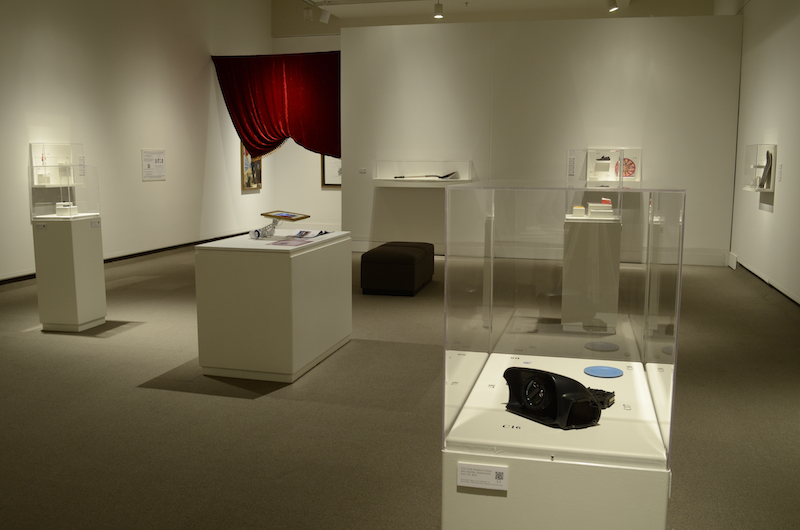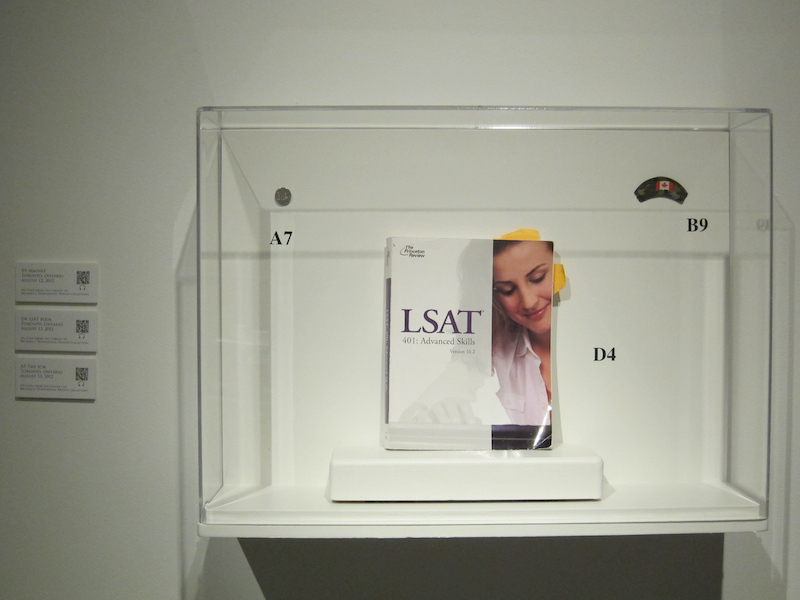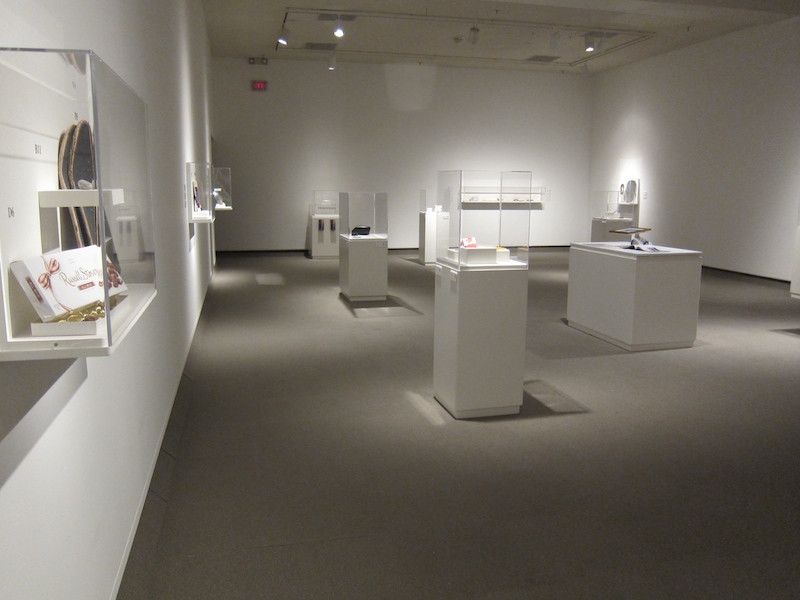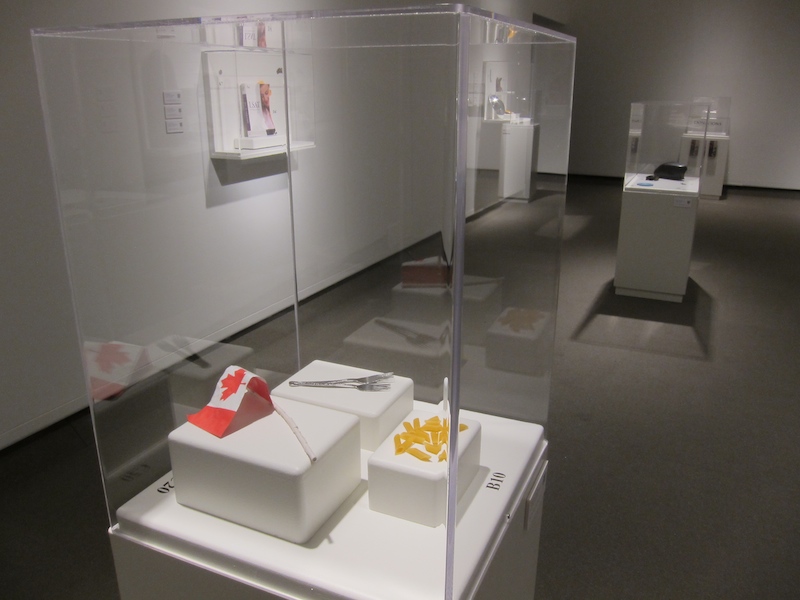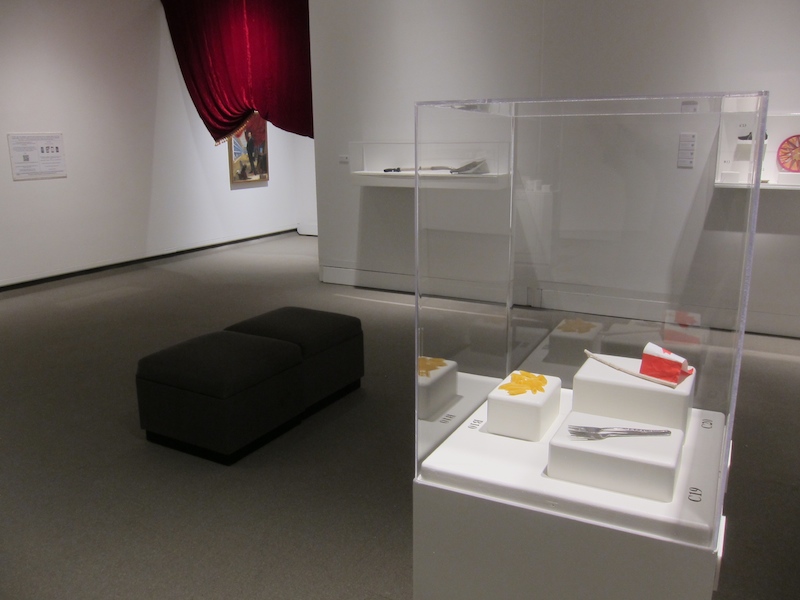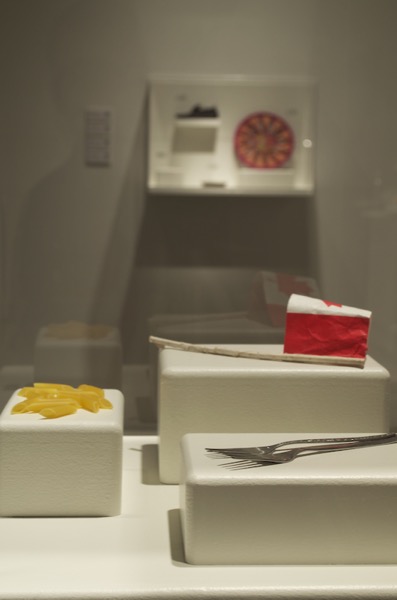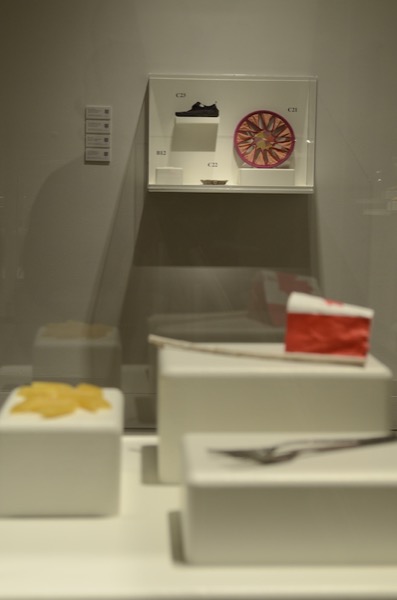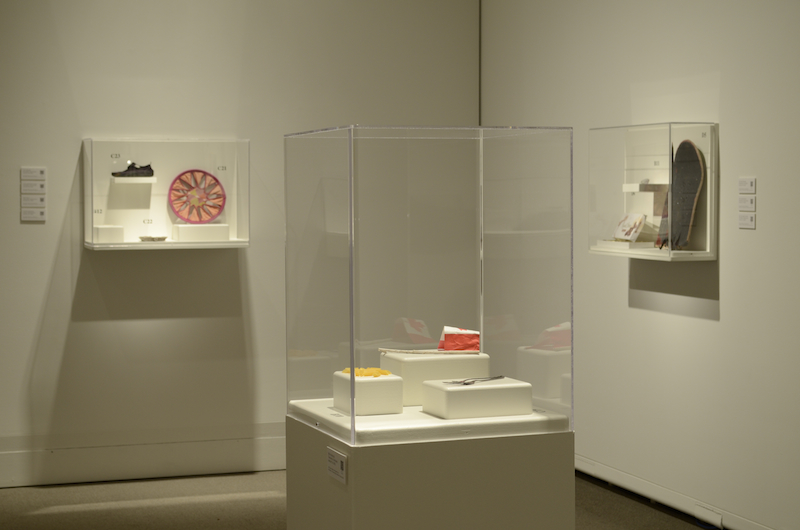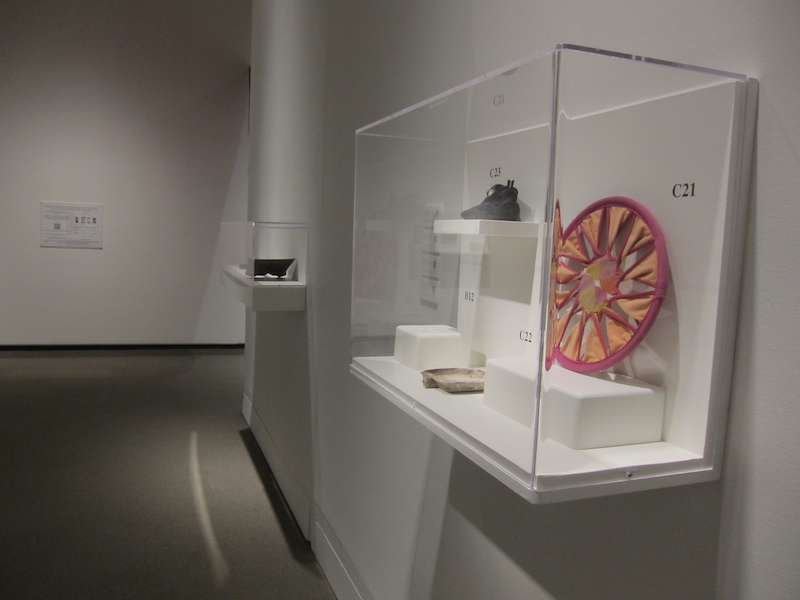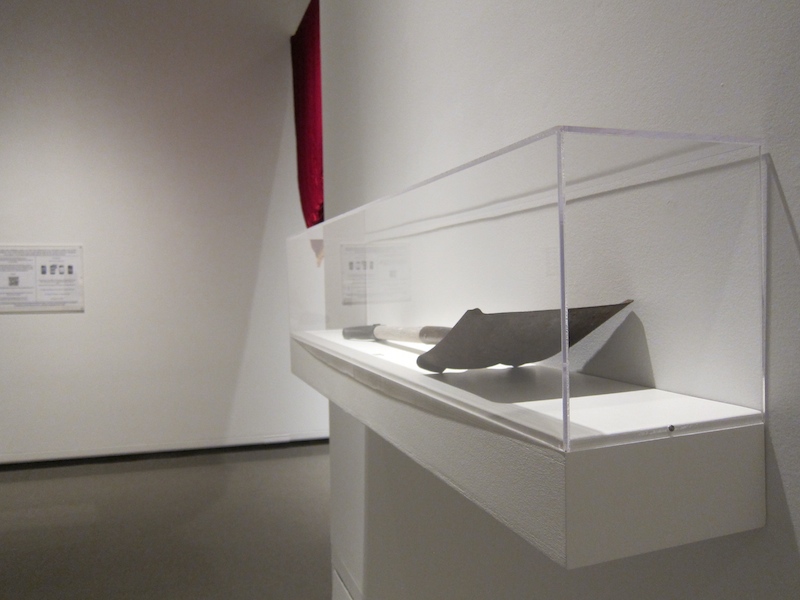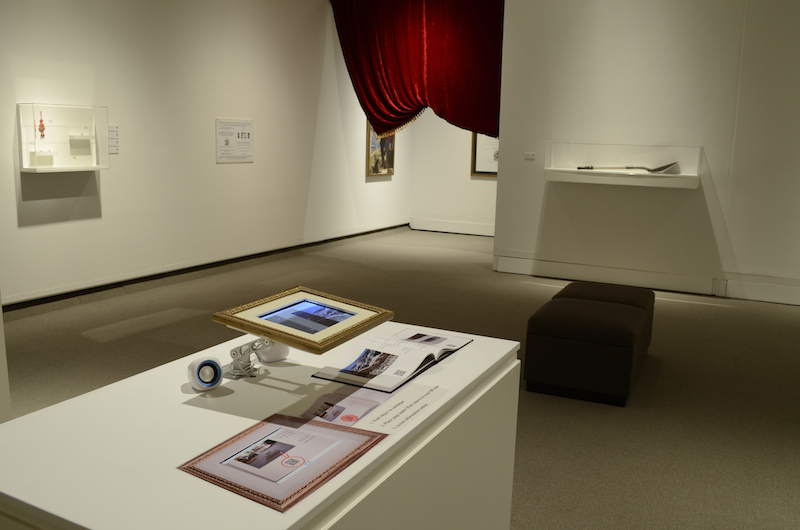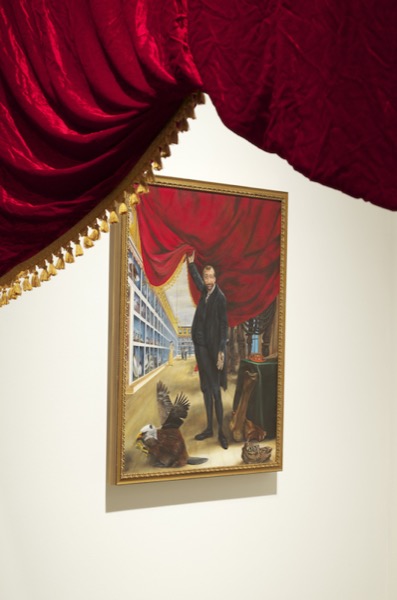Imagined Provenance: The Cabinet of Richard J. Pennington. Mixed Media, MacKenzie Art Gallery of Regina, Regina Sk, 2013.
This exhibition questions both the symbolic and monetary value that the act of collecting has the ability to fabricate.
By mimicking historical and contemporary collection techniques, provenance documentation, and the visual language of the museum,
the exhibition unsettles the role of the collector and of the institution in the construction of both truth and value.
△ Click here to visit the Imagined Provenance online catalogue (imaginedprovenance.com).
△ Click here to see the published Imagined Provenance catalogue.
Imagined Provenance: The Cabinet of Richard J. Pennington is a collection of discarded objects found in the course of my travels.
These objects include a single left shoe, a burnt out headlight bulb, a children’s plastic tea saucer, and a shovel, displayed in glass
vitrines at the MacKenzie Art Gallery in November 2013 (there were a total of 49 objects presented). Each object has a record of its acquisition,
including a map, photograph, and story of its provenance (the story of an object’s life, from origin to present possession) that mimics
contemporary and historical collection techniques. I fabricated the story of each object while traveling, and I also created the fictitious
illustrious collector, Richard J. Pennington, whose collection of these objects constitutes the bulk of the exhibition. The installation
was a formal gallery display that effectively transformed the banality of the found objects and so asked viewers to question the way that
we think about what counts as value in the art world.
The project is fueled by several questions that emerge from my exploration of value as constructed. How do we assign value to objects in
our society that do not provide for our basic survival? How can I, as an artist and researcher, make something of value to society? How
do artists take raw materials and ideas (things that are not concrete or physically tangible) and turn them into something of monetary or
cultural value? How can I use art to promote social change and encourage people to think about and question what we think we know?
Art often stands the test of time by dint of its acquisition into a collection where it is conserved, preserved, and displayed by an
institution or individual collector, the cultural status of both of which assign monetary and symbolic value to the objects. Pennington’s
cultural status is derived, characteristically, from social mobility, education, manner of speech, appearance, associations, and so on,
and is fabricated in the exhibition through portraits, handwritten letters, and other documentation.
My research drew upon historical and contemporary practices of value-making through an investigation of collection and display techniques,
provenance documentation, and museological method. The works of Gail Feigenbaum and Inge Reist were especially important to my understanding
of the idea of provenance and the role it has traditionally played in the value of artworks. The works of Susan Pearce, John Elsner,
and Roger Cardinal were important to my understanding of collection and collection practices. Narrative theory played an important
role in the conceptualization and development of the exhibition, and here I drew on such thinkers as Margaret Kovach and Patrick Lewis.
Finally, I was inspired and influenced by the works of artists such as Mark Dion and Andrew Hunter, who employ the techniques of
collection to create meaning and metaphor in their own art practice.
I bestowed value upon my found objects by employing the gregarious fictional Pennington as a personification of traditional collection
practices and techniques. In this manner I called into question the legitimacy of those arbitrary and socially constructed historical
and contemporary practices. None of the objects in my collection held any inherent monetary or functional value—they were, after all,
found trash.
